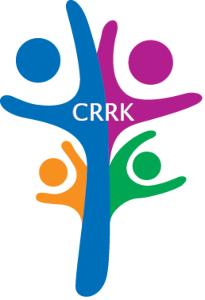Table of Contents
Spiritual Formation – 2
Paul expressed that Christians should not be focused on the worldview but on God’s view to know how Best Spiritual Formation Works. Ortberg used the phrase “We shall Morph Indeed” to help one grow spiritually and learn how to use every moment, and every activity of life, for morphing purposes.[1] Ortberg proclaimed, “God is not interested in your spiritual life He is interested in your life, and He intends to redeem it.”[2]
God’s work is similar to the Art of Michelangelo’s Pieta. The original Pieta was destroyed, and Michelangelo repaired the art; however, it was not as good as the original. Since the Fall of Man, the human race has been damaged, and God wants to restore the human race back to its original form before the fall without any flaws through transformation.
The possibility of a transformation is the essence of hope. Morph comes from morpho, which is the inward and real formation of a person’s essential nature.[3] Morph was used to describe the formation of an embryo in a mother’s body. Paul’s word was summorphizo, which means to have the same form as another shape or thing into a durable likeness.[4] The opposition to authentic transformation is “Pseudo-transformation.
The Danger of Pseudo Transformation
The danger of “Pseudo-transformation” is when people do not morph, they will be tempted to find external methods to satisfy their need to feel that they are different from those outside the faith. If one cannot be transformed, they will settle for being informed or conformed, which is called pseudo-transformation (conformed to what you have been informed).[5] Jesus spoke to the deepest longings of the human heart to become not simply conformed to a religious subculture but transformed into new creatures (See Romans 12:1).[6] Spiritual growth is loving God and His people.
There is an immense difference between training to do something and trying to do something.[6] “Spiritual transformation is not a matter of trying harder, but of training wisely.”[7] Ortberg argues the contrast between training hard and trying hard; simply put, trying does not bring about real change; real change is made in training as an athlete prepares for the game day with a strategy to beat his opponent.
On the other hand, trying is when the athlete arrives on game day without training, structure, or a plan but tries to beat his opponent. This ideology is often met with an inevitable failure. The distinction between training and trying is pivotal to transformation.[8]
Confessing to God only is the wrong way to look at confession.[9] Christians need to confess their sin to the offended in order to be changed.[10] Confession done wisely will help Christians become transformed. Therefore, forgiveness is a process.[11] The Greatest Commandment as found in Mathew 22:39 states, “love your neighbor as yourself” and Hebrews 10:25 says, “not forsaking the assembling of ourselves together, as is the manner of some, but exhorting one another, and so much the more as you see the Day approaching. These two Scriptures are a few of many which provoke and instruct Christians to have relationships, specifically, with other believers; this fellowship keeps one’s worldview aligned with the Bible.
How Spiritual Formation Works
One’s worldview is rooted in one culture and what one has been exposed to during their lifespan. Most of it is contributed by friends, family, education, resources (or lack thereof), and environment. Unfortunately, worldviews are limited to an individual’s exposure, which forms their perspective of the world. Paul expressed that Christians should not be focused on the worldview influenced by materialism but on God’s view about this world. And do not be conformed to this world, but be transformed by the renewing of your mind, so that you may prove what the will of God is, that which is good and acceptable and perfect (Romans 12:2). Christian Theism states, God is the creator; He is infinite, transcendent, sovereign, personal, caring, and loving.[12]
God’s View on Working of Spiritual Formation
According to McMinn, who stated to be integrative, we must allow Scripture primacy when determining Christian worldview (spiritual formation); additionally, we must allow our reasoning to correspond to the Bible and the sovereignty of God rules overall life. Based on McMinn’s one worldview includes his experience, cultural background, and education, but primarily anchors his inference from the Bible.[13]
Finally, Romans 12:1 says the following.
Therefore, I urge you, brothers and sisters, in view of God’s mercy, to offer your bodies as a living sacrifice, holy and pleasing to God—this is your true and proper worship.
Romans 12:1
Also, 1 Corinthians 6:19-20 says as follows
19 Do you not know that your bodies are temples of the Holy Spirit, who is in you, whom you have received from God? You are not your own; 20 you were bought at a price. Therefore honor God with your bodies.
1 Cor 6:19-20
The Integration of Theological and Psychological Counseling
Psychology is just sinful human beings sinfully thinking about other sinful human beings, this is a statement made by Jay E. Adams; he was known to preach on the position that “Scripture contained all the necessary information needed to help counsel someone.”[14] “Adam believed when humans came for counseling they were not sick humans; in fact, he was convinced that these humans were just sinful .” [14a]
According to Pearce and Koenig, integrating religion/spirituality into clinical practice has progressed in recent years. The model of spiritually integrated Cognitive-Behavioral Therapy for treating major depression in chronically ill people explicitly uses the client’s religious tradition as the basis for identifying and changing thoughts and dysfunctional behaviors. [15] Muse explains, exploratory and empirical research on Christianity and psychotherapy continues to increase.[16]
However, despite the increased information regarding the integration of these two topics, challenges continue to arise.[17]

Bingaman advises, for pastoral and spiritual caregivers, “the integration of mindfulness- and acceptance-based frames of reference with regular contemplative-meditational practice have the capacity to help clients and congregants reshape their mind and brain, leading to lasting changes in both neural functioning and structure.”[18] Davidson advised that this neural functioning and structure of the brain can assist in brain activity in fundamental ways. It can enable people to leave behind unhealthy patterns and go forward with new, healthier patterns that give them a renewed sense of joy and spare them the sadness, flat affect, and rumination that are crippling.[19]
Several integration theories exist. However, a favorite is the Reformed Model.[20] The Reformed Model also aligns with the Allied Model; they both believe in bringing everything under God’s sovereignty.[21] Furthermore, the Reformed Model seeks to stimulate intellectual and theoretical engagement between Christian faith content and the discipline of psychology versus competing or manipulating the two disciplines.[22] However, there is an aspect of the Reform Model that does reject psychology if it conflicts with theology. Entwistle writes, “the Christian scholar ought to reject certain theories claiming they conflict or do not comport well with the belief- of his authentic commitment.” [23]
In addition, Entwistle posits, “Christian scholars ought to devise theories which comport as well as possible with, or are at least consistent with, the belief-content of his authentic commitment while doing so he or she should devise a plan weighing of psychological theories .”[24] Unlike the other integration theories, this theory (Reformed Model) allows room for the Holy Spirit to be incorporated in the counseling session.
Evaluating Models
The telos for the Allies Model is to be faithful, studying God’s word and work, total praise and service to God, and honoring God’s command to love thy neighbor. [25] Furthermore, the Allies Model is to “discern the underlying unity of truth and to use it for godly ends .”[26] The greatest command is found in Mark 12:30, which states, and you shall love the Lord your God with all your heart, with all your soul, with all your mind, and with all your strength. This is the first greatest commandment.
The second greatest commandment is found in the telos of the Allies’ Model, which states, you should love your neighbor as yourself. There is no other commandment greater than these (Mark 12:31). Given this, the commandment from God first makes it easy to choose the Allies Model for integrating psychology and theology.
When viewing the other models of integration (Enemies, Spies, Colonialists, Rebuilders, and Neutral Parties), their telos does not include the verse mentioned above; furthermore, to some degree, these Scriptures are compromised to achieve the success of the client’s progress. For example,
- Enemies Model rejects one perspective or discipline,
- Spies Model manipulates integration paradigm; and reconstruct process,
- Colonialists Model also manipulates integrating paradigm; theology transforms psychology,
- Rebuilders Model rejects modernist distinctions between disciplines and believes theology transforms psychology and the
- Neutral Parties Model defines emphasize distinctiveness rather than unity.[27]
All these models presented, except the Allies and Reformed Model, either reject, manipulative, separate, and comprise the Holy word of God as God being the subject of One Sovereign, “which recognizes that all truth is known by God, who is Sovereign over all things.”[28]
[1] J. Ortberg, The Life You’ve Always Wanted: The Spiritual Disciplines for Ordinary People (Rev. ed.) Grand Rapids, MI: Zondervan, 2002, 14.
[2] ibid., 14.
[3] ibid., 20.
[4] ibid., 20.
[5] ibid., 30.
[6] ibid., 31.
[7] ibid., 42.
[8] ibid., 43.
[9] ibid., 129.
[10] ibid., 129.
[11] ibid., 129-130.
[12] Eric Scalise, The truth of God’s word and the science of psychology. Announcements forum question and answer center (QAC), Liberty University, Accessed April 13, 2018: 1. https://learn.liberty.edu/webapps/discussionboard/do/message.
[13] M. R. McMinn, M. R., Psychology, Theology, and Spirituality in Christian Counseling (Rev. ed.). Carol Stream, IL: Tyndale House Publishers, Inc, 2001, 286.
[14]D. N. Entwistle, Integrative Approaches to Psychology and Christianity: An Introduction to Worldview Issues. Philosophical foundations, and models of integration (3rd ed.) Eugene, OR: Wipf & Stock Publishers, 2015, 201.
[14a] ibid., 200.
[15] J. P. Pearce, & Koenig, H. G., Cognitive behavioral therapy for the treatment of depression in Christian patients with medical illness. Mental Health, Religion, and Culture, 16, (2013), 730–740.
[16] S. Muse, Finding the fit: An Eastern Orthodox approach to pastoral counseling. Edification: The Transdisciplinary Journal of Christian Psychology, 6(2), 2012, 125–139.
[17] Smaranda Buju, “Clinical Approach of Spiritual Illnesses: Eastern Christian Spirituality and Cognitive Behavioral Therapy.” Pastoral Psychology 68, no. 4 (August 2019): 375.
[18] Kirk A. Bingaman, “Incorporating Contemplative Neuroscience and Mindfulness-Based Therapies Into Pastoral Care and Counseling: A Critical Correlational Method.” Pastoral Psychology 65, no. 6 (December 2016), 578.
[19] R. J. Davidson, The emotional life of your brain: How its unique patterns affect the way you think, feel, and live – and how you can change them. New York: Plume, 2012, 174-175.
[20]D. N. Entwistle, Integrative Approaches to Psychology and Christianity: An Introduction to Worldview Issues. Philosophical foundations, and models of integration (3rd ed.) Eugene, OR: Wipf & Stock Publishers, 2015, 308.
[21]ibid., 309.
[22] ibid., 309.
[23] ibid., 309.
[24] ibid., 309.
[25] ibid., 184.
[26] ibid., 184.
[27] ibid., 309.
[28] ibid., 84.
How Best Spiritual Formation Works
End of “How Best Spiritual Formation Works“










Leave A Reply